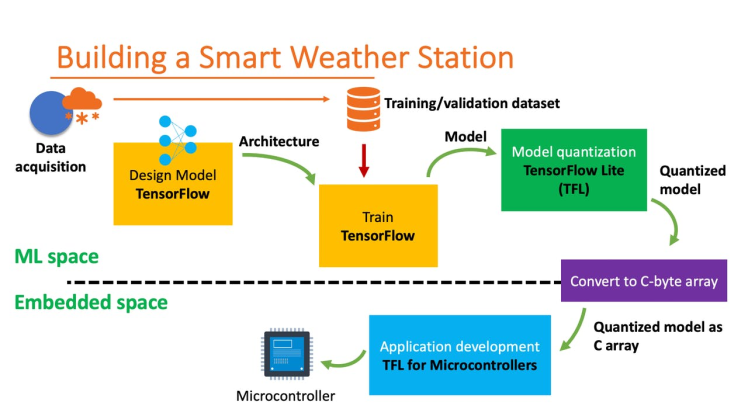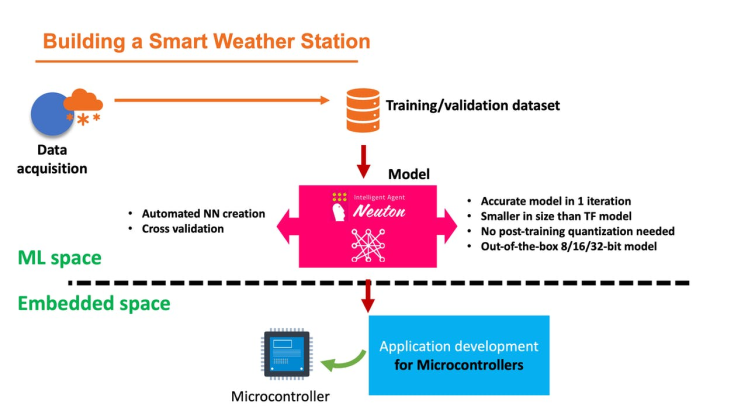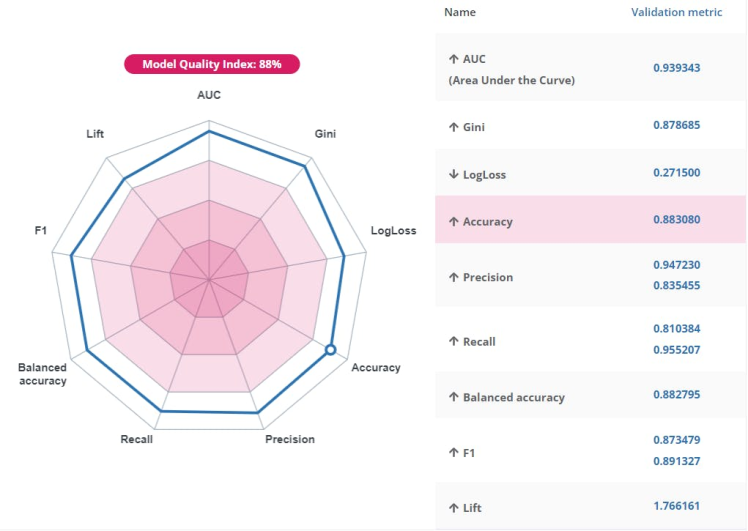Case From The Newly Released Tinyml Cookbook
About the project
Check out how to repeat a TinyML experiment on building a weather station from the new “TinyML Cookbook” and make the model smaller
Project info
Difficulty: Easy
Platforms: Arduino, Raspberry Pi, Neuton Tiny ML
Estimated time: 1 hour
License: GNU General Public License, version 3 or later (GPL3+)
Items used in this project
Story
Lately, I’ve been really passionate about the field of TinyML, actively researching how to enable ML-driven solutions on low-powered devices, and I came across a newly released book, “TinyML Cookbook”, written by Gian Marco Iodice, a team and tech lead in the Machine Learning Group at Arm.
To my mind, this book is the most self-explanatory guide on TinyML existing today as the author gives a comprehensive overview of the concept in general and illustrates it with a lot of cool practical cases, so-called “recipes”. I took one of such recipes and decided to repeat the experiment of building an 8-bit model for predicting the probability of snow.
For more interest, I decided to build my model on another platform instead of the one suggested by the author (he implemented the case using TensorFlow Lite). I opted for a free-to-use platform, Neuton TinyML, in order to compare metrics of the resultant models which had to be deployable on memory-constrained MCUs (the author conducted the experiment on an Arduino Nano and a Raspberry Pi Pico).
Frankly speaking, I got quite exciting outcomes. Keep reading to learn the details :)
Original Process
The original process is described in Chapter 3 of the “TinyML Cookbook” where the author gives a detailed explanation of all the development stages of a TF-based application for an MCU, including:
- Import of weather data from WorldWeatherOnline
- Dataset preparation
- Model training with TF
- Model quantization with a TFLite converter
- Using the built-in temperature and humidity sensor on an Arduino Nano
- Using the DHT22 sensor with a Raspberry Pi Pico
- Preparing the input features for the model inference
- On-device inference with TFLu
For clarity, the process can be represented as such a scheme:

The author also provided a useful link so that everyone can easily get the source code: https://github.com/PacktPublishing/TinyML-Cookbook/blob/main/Chapter03/ColabNotebooks/preparing_model.ipynb
Alternative Way
The example that the author gives in his book is indeed a good working case, especially since everything is described in the book to the smallest detail, and links to all the necessary resources are given.
However, I thought about how to improve the proposed workflow and reduce the number of steps by eliminating the need for quantization. Here’s the workflow that I created with Neuton TinyML:

Step-by-step Workflow
The main aim of my experiment was precisely the creation of a model to check the metrics. My workflow on the Neuton TinyML platform can be described in the following steps:
- Upload a new solution and uploaded a training dataset.
- Upload a validation dataset.
- Select a target variable “Target”.
- Choose the target metric “Accuracy”, enable the TinyML mode, and select 8-bit depth.
- Start model training.
Here are the metrics of the resultant model:

To my mind, the most noteworthy outcome that I got is that the model turned out to be super compact - 0.4 Kb without any additional compression or quantization, and the small size didn’t affect the accuracy at all (which is 88%).
If we compare the models created using the approach of the author of the book and my approach, we get the following results:

Thus, I can conclude that when using the Neuton TinyML platform, I was able to speed up the process of creating a model, as well as get better results in terms of size without compromising accuracy.
In fact, the book, “TinyML Cookbook” also describes other interesting cases, such as voice recognition, gesture-based interface building, and indoor scene classification, among others. Thank you, Gian Marco Iodice, for writing a cool book that inspires people to conduct experiments in the TinyML field.




















Leave your feedback...